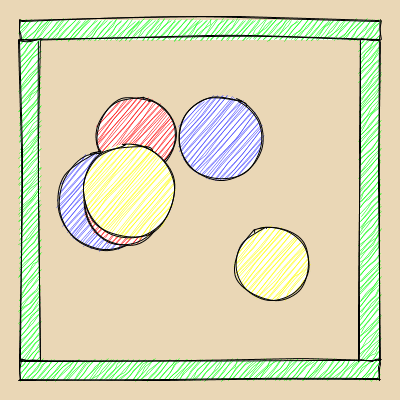The Handy library JRubyArt
The handy library is not available from processing ide, you will probably need to build it. Here is the pom.xml I used for a maven build, you only need the gicentre.utils and jogl to build the tests:-
<?xml version="1.0" encoding="UTF-8"?>
<project xsi:schemaLocation="http://maven.apache.org/POM/4.0.0 http://maven.apache.org/xsd/maven-4.0.0.xsd" xmlns="http://maven.apache.org/POM/4.0.0"
xmlns:xsi="http://www.w3.org/2001/XMLSchema-instance">
<modelVersion>4.0.0</modelVersion>
<groupId>org.gicentre.handy</groupId>
<artifactId>Handy</artifactId>
<version>2.0</version>
<name>Handy</name>
<properties>
<polyglot.dump.pom>pom.xml</polyglot.dump.pom>
<project.build.sourceEncoding>UTF-8</project.build.sourceEncoding>
<maven.compiler.source>1.8</maven.compiler.source>
<jruby.api>http://jruby.org/apidocs/</jruby.api>
<maven.compiler.target>1.8</maven.compiler.target>
<jogl.version>2.3.2</jogl.version>
</properties>
<dependencies>
<dependency>
<groupId>org.processing</groupId>
<artifactId>core</artifactId>
<version>3.3.7</version>
<type>jar</type>
</dependency>
<dependency>
<groupId>org.jogamp.jogl</groupId>
<artifactId>jogl-all</artifactId>
<version>${jogl.version}</version>
</dependency>
<dependency>
<groupId>org.jogamp.gluegen</groupId>
<artifactId>gluegen-rt-main</artifactId>
<version>${jogl.version}</version>
</dependency>
<dependency>
<groupId>org.gicentre.utils</groupId>
<artifactId>gicentreUtils</artifactId>
<version>3.4</version>
<type>jar</type>
</dependency>
</dependencies>
</project>
For the following sketch I used the handy.jar from a local library folder:-
load_libraries :balls, :handy
java_import 'org.gicentre.handy.HandyRenderer'
BALL_NUM = 6
attr_reader :handy, :balls
def settings
size(400, 400)
end
def setup
sketch_title 'Handy Ball Collision'
@handy = HandyRenderer.new(self)
@balls = (0...BALL_NUM).map { |idx| Ball.new(self, idx) }
end
def draw
background(234, 215, 182)
fill(0, 255, 0)
draw_borders(handy)
balls.each(&:draw)
end
def draw_borders(renderer)
renderer.rect(20, 20, 360, 20)
renderer.rect(20, 360, 360, 20)
renderer.rect(20, 40, 20, 320)
renderer.rect(360, 40, 20, 320)
end
The balls library balls.rb
BALL_COLORS = [[255, 0, 0], [255, 255, 0], [64, 64, 255]].freeze
# Bouncing ball
class Ball
attr_reader :sketch, :position, :delta, :bounds
def initialize(sketch, id)
@sketch = sketch
@position = Vec2D.new rand(100..300), rand(100..300)
@delta = Vec2D.new rand(0.1..6), rand(0.1..6)
@delta *= -1 if rand > 0.5
@size = rand(60..100)
radius = @size / 2.0
@color = BALL_COLORS[id % BALL_COLORS.size]
@bounds = Boundary.new(40 + radius, 360 - radius)
end
def draw
@position += delta
if bounds.exclude? position.x
position.x = position.x > bounds.upper ? bounds.upper : bounds.lower
delta.x *= -1
end
if bounds.exclude? position.y
position.y = position.y > bounds.upper ? bounds.upper : bounds.lower
delta.y *= -1
end
sketch.fill(*@color)
sketch.handy.ellipse(position.x, position.y, @size, @size)
end
end
# Useful helper class
Boundary = Struct.new(:lower, :upper) do
def exclude?(val)
!(lower..upper).cover? val
end
end
